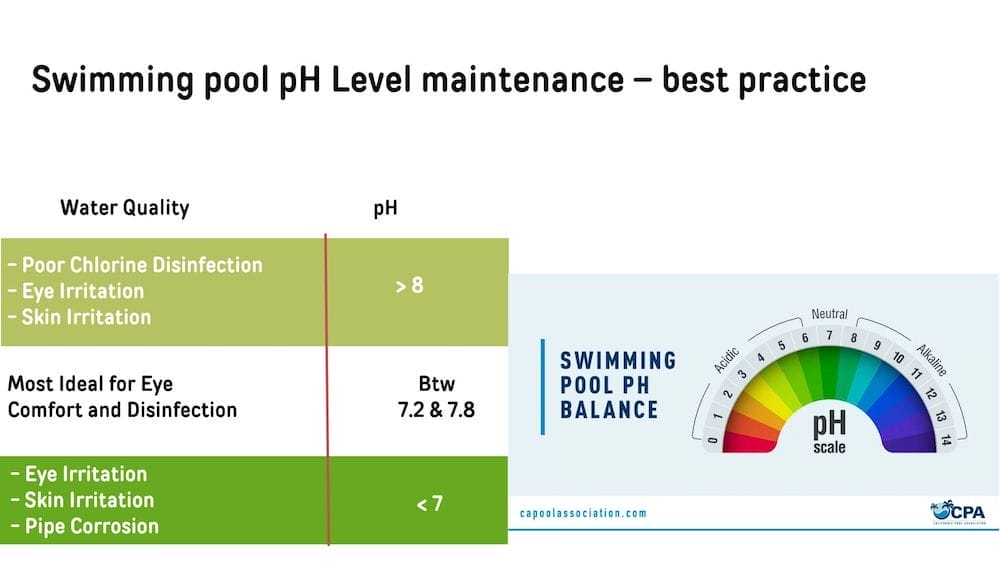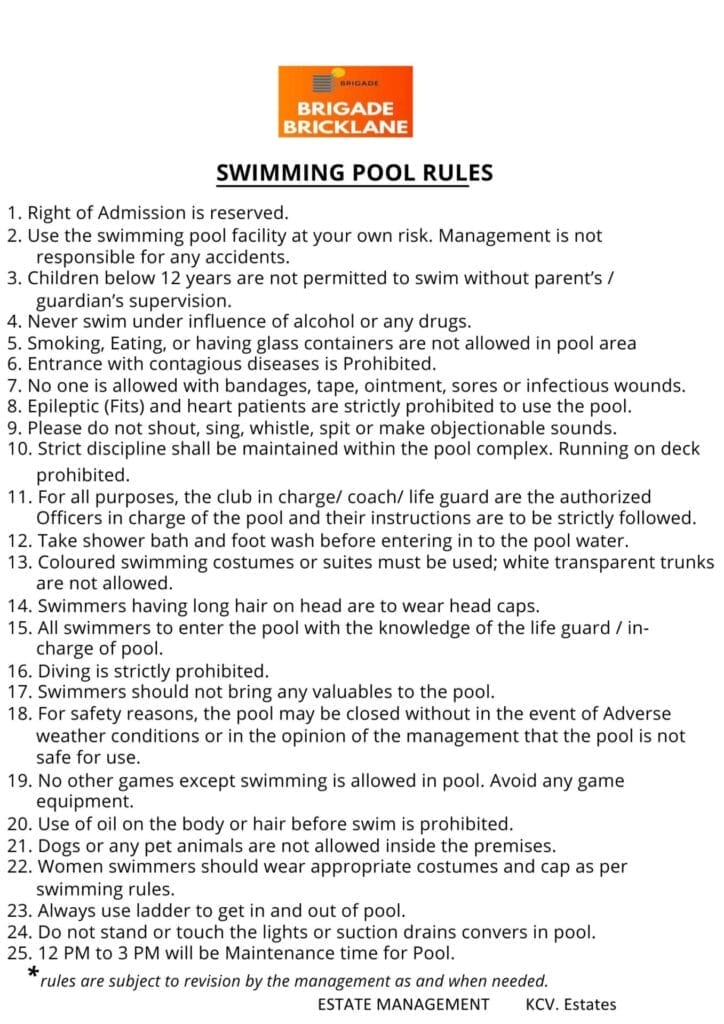A community swimming pool is one of the most pleasurable and easiest avenues of relaxation for most urban apartment dwellers today. And yet a number of very unfortunate incidents in the recent past have created grave concerns and stress around its use, maintenance and management. From Gurgaon to Hyderabad and of course, in Namma Bengaluru, several shocking incidents leading to fatalities in swimming pools have given a huge jolt to residents and management committee members.
The biggest jolt, perhaps, came in the recent instance, where following the tragic swimming pool death of a nine-year-old child in one of Bengaluru’s apartments, six office bearers were arrested and the Karnataka HC ruled that office bearers in owners’ associations are indeed liable for prosecution for criminal negligence, if there were no lifeguards at the scene or if safety measures were found to be inadequate.
All of these have created concern, confusion and very pertinent questions in the minds of all community residents and members of managing committees (MC). What is, however, straightforward is the fact that adequate attention to safety guidelines and preventive measures can go a long way in reducing accident risk, and therefore the legal risks for MC members too.
In part 1 of the guide, therefore, we look at the swimming pool’s operational, mechanical processes and usage guidelines.
Overview of swimming pool safety
Ensure that during the handover of the building these specifications are in place:
- Design and Drawings of the Pool
- Plumbing/Pipelines
- Inlet and outlet valve details
- Capacity of the filtration based on the pool capacity
- Specification of lighting system and electrical diagram
- Spare tiles for replacement
Pool Maintenance
Pool maintenance is a continuous process. A typical thumb rule of pool maintenance is:
- Regular usage = less maintenance
- Less usage = more maintenance.
Proper maintenance of your swimming pool filtration system is essential to ensure clean, clear and safe pool water. Regular maintenance helps prolong the life of your equipment, enhances water quality, and prevents costly repairs. There are 2 aspects of pool maintenance:
- Pool cleanliness: Filtration plant and physical cleanliness
- Maintaining of chemical balance – Chlorine & Alum
Filtration plant and physical cleanliness
- Regularly clean pump and strainer baskets to ensure optimal water flow, inspect and lubricate O-rings and seals to prevent leaks, and address unusual noises promptly.
- Monitor pump performance, adjust flow rates for even water distribution, and check for leaks in return lines and connections.
- Conduct routine inspections of the entire filtration system, including pipes, fittings, and electrical connections.
- Keep an eye on pressure gauges to determine when filters need cleaning or backwashing
- Maintain detailed logs of all maintenance activities and repairs to track system performance and anticipate future needs.

Plumbing System
- Mark all plumbing appropriately, indicating the flow direction and destination.
- Check the pipes regularly for leakages.
- The pipes are to/from the pump room.
Maintaining of chemical balance
Alum (aluminium sulfate) is a nontoxic liquid that is commonly used in water treatment plants to clarify drinking water. Add alum when the water is excessively dirty or its colour changes.
- Night before: Apply 10 kg of alum.
- Next steps: Allow the water to settle for 12 hours.
- Following day: Use the suction with the backwash valve open to drain the water. Then, top up the water and add chlorine.
Chlorine serves as a disinfectant and prevents algae growth in the pool. To maintain healthy water, keep the chlorine level between 1-1.5 ppm.
- Forms of Chlorine: use either liquid or granules.
- Granules: When added directly, they sink to the bottom and dissolve slowly, but they are more expensive.
- Liquid: To ensure proper distribution, add the liquid in 3 or 4 different spots in the pool..
Replenish the chlorine regularly since it evaporates from the water.
Maintenance of swimming pool involves disinfection, clarity, pH level and smell. pH or Potential of Hydrogen, measures the balance of hydrogen ions of pool water, indicating if it is basic, neutral, or acidic. If the pH is too acidic, it can damage grout, tiles and concrete. If too alkaline, it causes unsightly and costly scale buildup. Swimming in water with an imbalanced pH can also make hair brittle, skin itchy, and bleach bathing suits.

External Precautions
External precautions are measures taken to ensure the safety of individuals around the pool area. These include: fencing to prevent unauthorised access, especially by children, proper lighting to avoid accidents during evening or night use and non-slip materials around the pool deck to prevent slips and falls.
Depth Indicators are crucial for informing swimmers about the varying depths of the pool. These indicators should be clearly visible above the water surface and marked at regular intervals and at points where the pool depth changes. Using contrasting colours with the pool background will ensure visibility
Display warning boards with essential safety information and guidelines, such as: emergency contact information and supervision requirements for children – no running, no glass containers, etc. Clearly marked entry and exit points, locations of lifesaving devices such as life buoy rings, vests, first aid kits, etc. Install emergency communication devices like intercoms near life rings so that rescuers can quickly call for additional help if needed.

Swimming pool usage guidelines
Community pools cater to people of all ages and genders. To prevent mishaps, violations, or accidents, it’s essential to communicate clear guidelines for pool usage and etiquette to all users. Here are some model guidelines:

Pool maintenance checklist
Pool maintenance is a continuous process, this can be divided into daily, weekly, monthly, as required basis:
Daily:
- Net Fishing: Remove leaves and other floating debris from the pool twice daily, in the morning and evening.
- Skimmer Cleaning: Clear the skimmers regularly.
- Brushing: Brush the pool bottom to remove settled dirt in the morning and during breaks. Also, brush the sides and steps.
- Suction: Use suction to clean the pool
- Cleaning Chambers: Ensure the chambers are cleaned.
Weekly – Test Water Regularly: Use a pool testing kit to check the levels of chlorine, pH, alkalinity, and other chemicals at least once a week.
- Vacuum the dust settled at the bottom twice a week.
- Monitor the water level and notify for a top-up if needed.
- Add alum to help the dust settle.
- Perform a backwash.
Monthly
- Inspect the equipment for any leaks or signs of wear and tear.
- Monitor the filter pressure and recommend cleaning the filter at least twice a year.
Frequently Asked Questions
Summer is a hub of activities around the pool, as it is the most sought after place as most associations hold swimming camps for both children and adults. This year, however, due to the severe heat and drought-like situation, BWSSB had curtailed the use of freshwater in the swimming pools, with a fine of Rs. 5000 on violations, which led to major debate and angst between MCs and residents:
- What cost-effective strategies can be employed to maintain safety and reduce upkeep expenses?
- Existing plumbers can be trained to be a swimming pool operator, Facility Management companies may be able to provide these workshops.
- Energy Efficiency: Run the pool pump during off-peak hours to save on energy costs and ensure efficient filtration.
- How frequently should a full pool be refilled?
- On an average around 10 – 20% water is lost due to evaporation, regular filtration and cleaning; backwash process.
- What would happen if the pool water is not replenished and left unused for long periods of time?
- Do not drain out pool, as replenishing it will be very costly.
- Regardless of whether the pool is in use, regular maintenance is essential to prevent algae growth and discoloration.
- What precautions are necessary if the pool is temporarily closed, and is it safe to reuse treated water in this scenario? If so, what specific precautions should be followed?
- Treated water is not recommended for pool use unless it has undergone tertiary treatment, as it comes into contact with the skin and can enter the body. In Bengaluru TZ Homes reuses treated grey water, which is potable quality for use in their pool.
- How can we protect pools that lack safeguards like fencing?
- Ensure that only authorised individuals can access the pool area by using access cards.
- Assign staff to monitor the pool area and ensure safety protocols are followed.
- For pools with varying depths, especially those deeper than 4 feet, assign a lifeguard on duty.
- What permissions are required to operate a swimming pool in a society in Bengaluru?
- Whilst there are NOCs for STPs/WTPs from KSPCB and for lifts and DG sets from CEIG, there are no specific agencies to certify swimming pools. Instead, swimming pools are included as part of the sanction plan approved by BBMP, without requiring specific permissions.
(With inputs from KC Vinod, Brigade Facility Management Services; ADDA-BAF-CM online workshop on Community Swimming Pool Risks & Liabilities.)
Thanks Sandhya well done. Sent to my MC. Posted in my apartment cluster groups. Very useful for apartments MCs.
Thanks sister Sandya Bhatt. Very well covered all points.
Sharing with all my apartment groups.
Must for Apartment MC Team.
What is the Karnataka High court ruling reference number? How can we get a copy of the ruling?